#Empire State Building 1930s
Text
Bohemian Rhapsody
Part love story and part wildlife protection fable, the pre-Code romance and melodrama Zoo in Budapest was that rare film that pleased critics and audiences alike.
May 6, 1933 cover by Richard Decker. This is one of four covers Decker (1907–1988) contributed to The New Yorker; he also contributed more than 900 cartoons in his nearly 40-year run with the magazine.
Jesse L. Lasky’s first production…

View On WordPress
#Alexander Woollcott#Cyrus Baldridge#Empire State Building 1930s#Force Cereal#Gardner Rea#Garrett Price#Gene Raymond#Gluyas Williams#H.L. Knickerbocker#James Thurber#John Mosher#Loretta Young#Otto Soglow#Richard Decker#Robert Day#Zoo in Budapest
0 notes
Text

This photo, with no retouching, was made from the windows of the Daily News on May 19, 1934, by Hank Olen, a staff photographer. The flash of lightning that plays around the Empire State Building so closely that it seems to have hit it, provided all the light that was needed to make the picture.
Photo: Hank Olen for the NY Daily News via Getty Images/Fine Art America
#vintage New York#1930s#Hank Olen#lightning#Empire State Building#May 19#19 May#lightning bolt#electrical storm
269 notes
·
View notes
Text
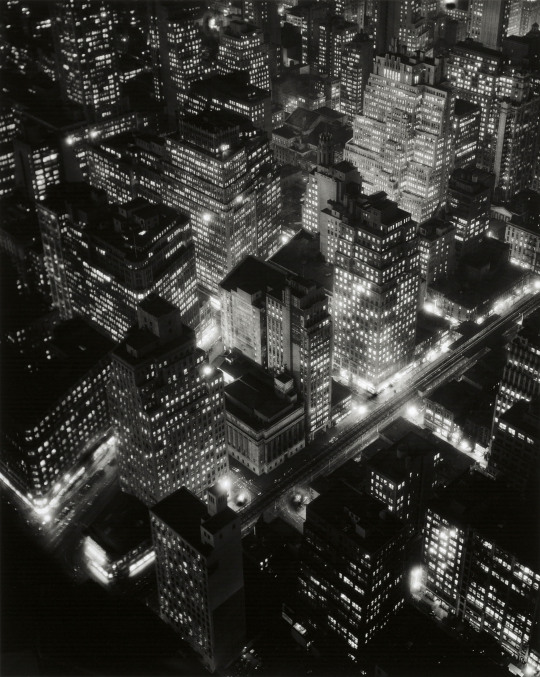
Nightview, New York at Night, Empire State Building, Berenice Abbott, 1932
#photography#vintage photography#vintage#black and white photography#american#berenice abbott#new york#new york city#cityscape#female artists#women artists#empire state building#1930s#1932#night scene
79 notes
·
View notes
Text
instagram
Vintage photo 1932 Empire State Building - partial eclipse watchers
#vintage fashion#shop vintage#vintage#eclipse#celestial#sun and moon show#1930s#empire state building#vintage photography#Instagram
14 notes
·
View notes
Text

Airship docking at the top of the Empire State Building in Manhattan, 1930s
#history#nyc history#1930s#new york city#nyc#vintage nyc#architecture#empire state building#airship#postcards aesthetic#vintage postcards#postcards#midtown#voca1ion
11 notes
·
View notes
Text

Empire State Building, New York
Shreve, Lamb and Harmon
1930s
Lewis Wickes Hine
5 notes
·
View notes
Text

All hail the King of Skull island!
🏝️🦍
#history#king kong#new york city#komodo dragon#united states#movie history#komodo island#universal studios#skull island#merian c. cooper#american history#1920s#1930s#islands of adventure#behind the scenes#animal history#empire state building#west indies#american culture#historical figures#american museum of natural history#new york history#movies#animals#bronx zoo#expedition#nickys facts
4 notes
·
View notes
Text

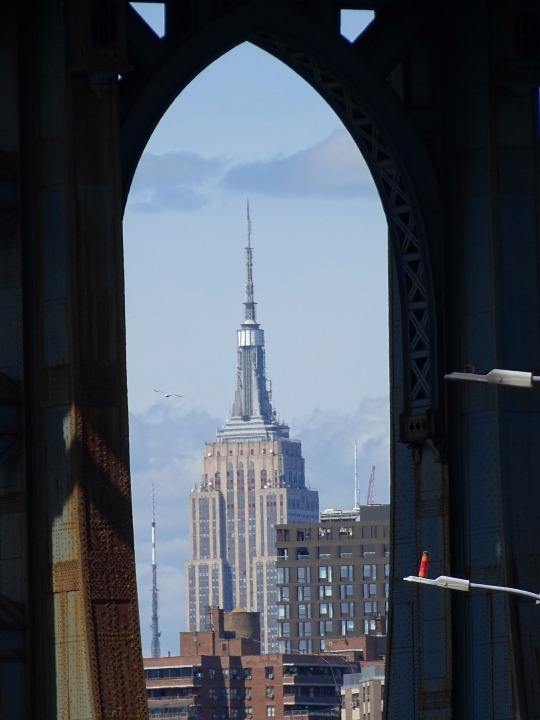


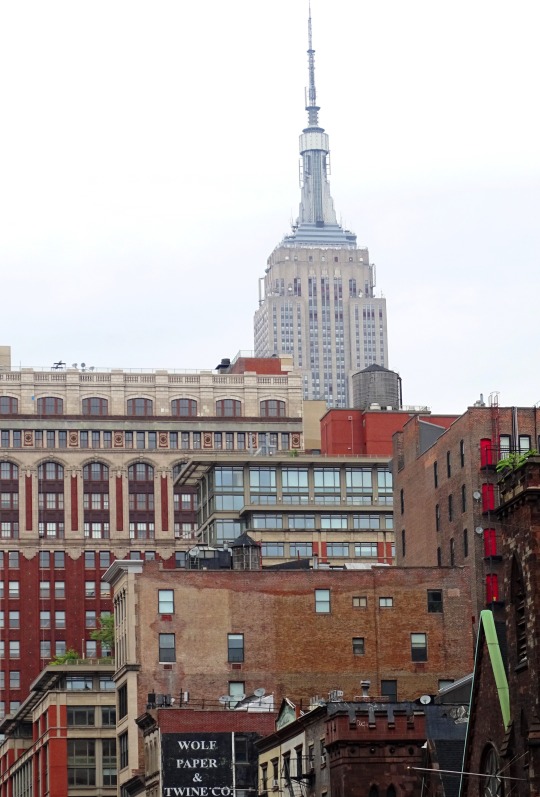

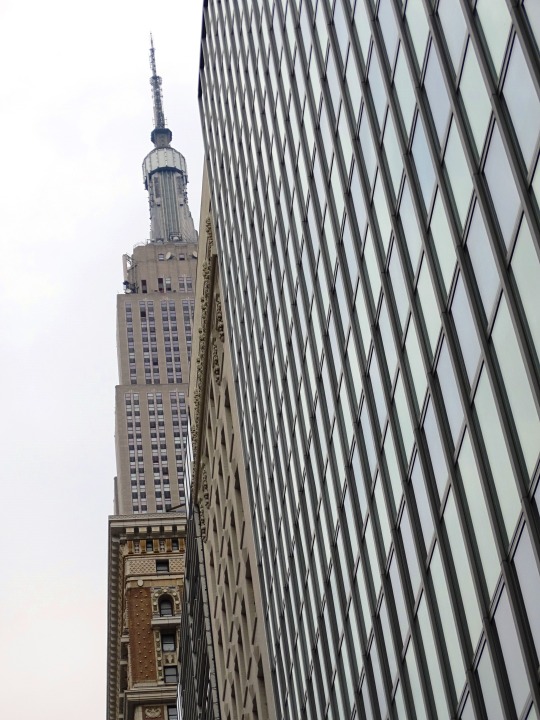




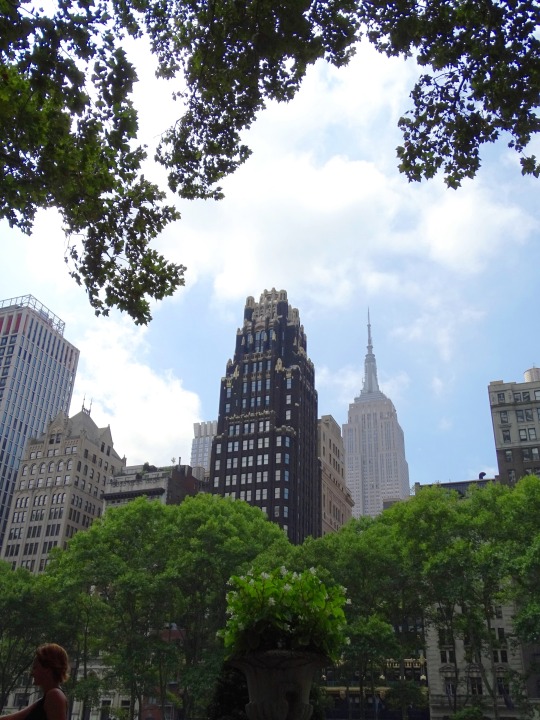
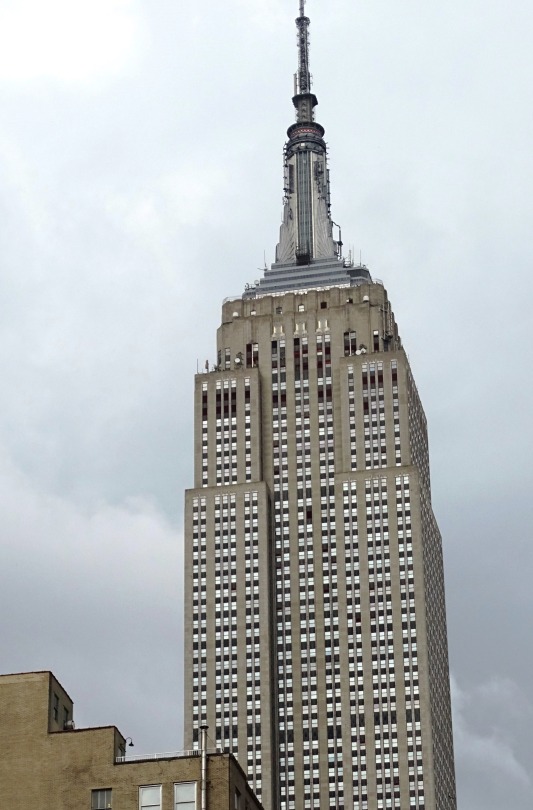




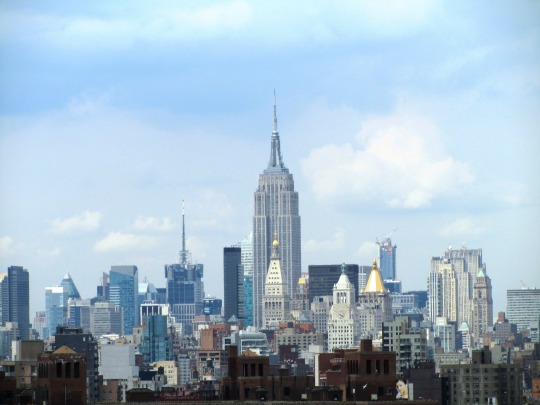



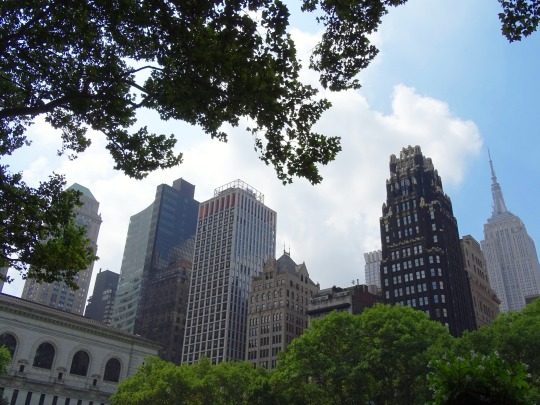

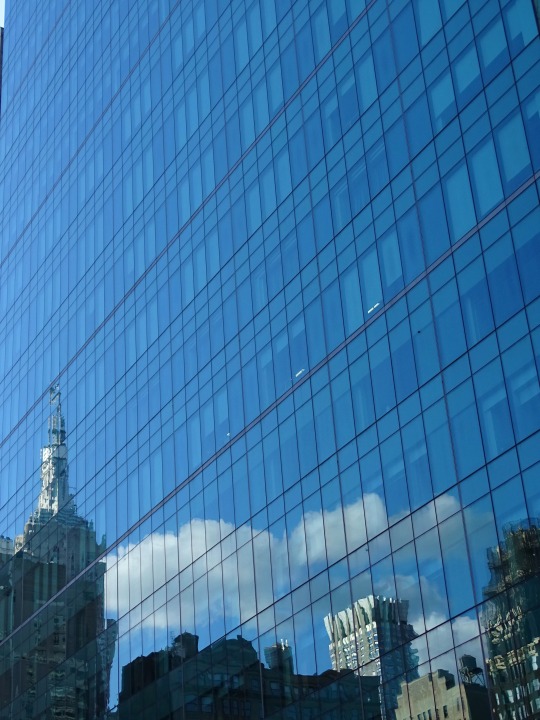


The construction of the Empire State Building started on March 17, 1930.
#Salesforce Tower#summer 2019#2018#original photography#architecture#Art Deco#350 Fifth Avenue#5th Avenue#Midtown Manhattan#New York City#Shreve Lamb and Harmon#American Radiator Building#Bryant Park#cityscape#tourist attraction#landmark#exterior#construction#started#Empire State Building#17 March 1930#anniversary#US history#skyline#2013#Manhattan Bridge#Brooklyn#DUMBO#travel#vacation
5 notes
·
View notes
Photo

September 11, 1933. New York City views. Looking north from the Empire State Building. 5x7 safety negative by Gottscho-Schleisner.
28 notes
·
View notes
Photo

1931, the Empire State Building nears completion, as the USS Los Angeles (ZR-3) and two US Navy blimps circle above and behind the midtown skyscraper. Photo by Lewis Hine
9 notes
·
View notes
Text
Des acrobates sur le toit de l'Empire State Building en 1934 [vidéo]
Nouvel article publié sur https://www.2tout2rien.fr/des-acrobates-sur-le-toit-de-lempire-state-building-en-1934-video/
Des acrobates sur le toit de l'Empire State Building en 1934 [vidéo]

#20eme siecle#acrobate#années 1930#building#cascadeur#Empire State Building#gymnaste#immeuble#noir et blanc#vidéo#vintage#imxok#sport
0 notes
Text
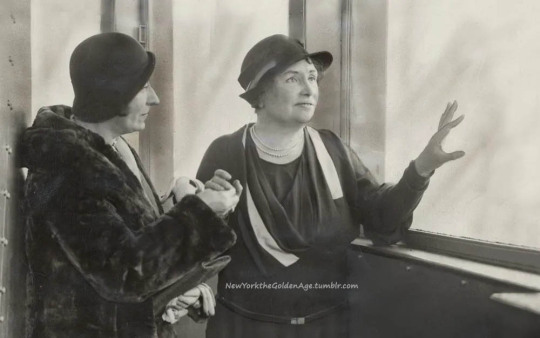
Seeing in The New York Times the photograph of Helen Keller in the Observation Tower of the Empire State Building, I [Dr. John H. Finley] wrote her asking her what she really “saw” from that height. This remarkable letter written by her came in answer and was published in The New York Times Magazine. It will be agreed by all who read it that, as she said, she “beheld a brighter prospect than my friends with two good eyes.”
January 13, 1932
Dear Dr. Finley:
After many days and many tribulations which are inseparable from existence here below, I sit down to the pleasure of writing to you and answering your delightful question, “What Did You Think ‘of the Sight’ When You Were on the Top of the Empire Building?”
Frankly, I was so entranced “seeing” that I did not think about the sight. If there was a subconscious thought of it, it was in the nature of gratitude to God for having given the blind seeing minds. As I now recall the view I had from the Empire Tower, I am convinced that, until we have looked into darkness, we cannot know what a divine thing vision is.
Perhaps I beheld a brighter prospect than my companions with two good eyes. Anyway, a blind friend gave me the best description I had of the Empire Building until I saw it myself.
Do I hear you reply, “I suppose to you it is a reasonable thesis that the universe is all a dream, and that the blind only are awake?” Y—es—no doubt I shall be left at the Last Day on the other bank defending the incredible prodigies of the unseen world, and, more incredible still, the strange grass and skies the blind behold are greener grass and bluer skies than ordinary eyes see. I will concede that my guides saw a thousand things that escaped me from the top of the Empire Building, but I am not envious. For imagination creates distances and horizons that reach to the end of the world. It is as easy for the mind to think in stars as in cobble-stones. Sightless Milton dreamed visions no one else could see. Radiant with an inward light, he sent forth rays by which mankind beholds the realms of Paradise.
But what of the Empire Building? It was a thrilling experience to be whizzed in a “lift” a quarter of a mile heavenward, and to see New York spread out like a marvellous tapestry beneath us. There was the Hudson—more like the flash of a sword-blade than a noble river. The little island of Manhattan, set like a jewel in its nest of rainbow waters, stared up into my face, and the solar system circled about my head! Why, I thought, the sun and the stars are suburbs of New York, and I never knew it! I had a sort of wild desire to invest in a bit of real estate on one of the planets. All sense of depression and hard times vanished, I felt like being frivolous with the stars. But that was only for a moment. I am too static to feel quite natural in a Star View cottage on the Milky Way, which must be something of a merry-go-round even on quiet days.

I was pleasantly surprised to find the Empire Building so poetical. From everyone except my blind friend I had received an impression of sordid materialism—the piling up of one steel honeycomb upon another with no real purpose but to satisfy the American craving for the superlative in everything. A Frenchman has said, in his exalted moments the American fancies himself a demigod, nay, a god; for only gods never tire of the prodigious. The highest, the largest, the most costly is the breath of his vanity.
Well, I see in the Empire Building something else—passionate skill, arduous and fearless idealism. The tallest building is a victory of imagination. Instead of crouching close to earth like a beast, the spirit of man soars to higher regions, and from this new point of vantage he looks upon the impossible with fortified courage and dreams yet more magnificent enterprises.
What did I “see and hear” from the Empire Tower? As I stood there ’twixt earth and sky, I saw a romantic structure wrought by human brains and hands that is to the burning eye of the sun a rival luminary. I saw it stand erect and serene in the midst of storm and the tumult of elemental commotion. I heard the hammer of Thor ring when the shaft began to rise upward. I saw the unconquerable steel, the flash of testing flames, the sword-like rivets. I heard the steam drills in pandemonium. I saw countless skilled workers welding together that mighty symmetry. I looked upon the marvel of frail, yet indomitable hands that lifted the tower to its dominating height.
Let cynics and supersensitive souls say what they will about American materialism and machine civilization. Beneath the surface are poetry, mysticism and inspiration that the Empire Building somehow symbolizes. In that giant shaft I see a groping toward beauty and spiritual vision. I am one of those who see and yet believe.
I hope I have not wearied you with my “screed” about sight and seeing. The length of this letter is a sign of long, long thoughts that bring me happiness.
I am, with every good wish for the New Year,
Sincerely yours,
Helen Keller
Top photo: Times Wide World Photos/Letters of Note
Bottom photo: Associated Press
#vintage New York#1930s#Helen Keller#Empire State Building#Empire State Bldg.#Jan. 13#13 Jan.#blind#deaf#imagination#seeing blind#how blind see#idealism#materialism#American materialism
40 notes
·
View notes
Photo

100 Most Fascinating Facts About the Empire State Building
The Empire State Building, located in the heart of Manhattan, New York City, is an iconic skyscraper and one of the most famous landmarks in the world.
Construction of the Empire State Building began on March 17, 1930, and was completed in just 410 days, opening its doors to the public on May 1, 1931.
Standing at a staggering height of 1,454 feet (443.2 meters), including its antenna, the Empire State Building was the tallest building in the world when it was completed. It held this title for nearly 40 years until the completion of the World Trade Center's North Tower in 1970.
The Empire State Building has 102 floors, with 86 of them being used for office space, and it houses numerous businesses and organizations.
The building was designed by architect William F. Lamb, who worked for the architectural firm Shreve, Lamb & Harmon Associates. The design was inspired by the Art Deco style, which was prevalent in the 1930s.
It cost approximately $40 million to build the Empire State Building, which would be equivalent to over $700 million in today's money when adjusted for inflation.
The building's construction was completed during the Great Depression, and it was often referred to as the "Empty State Building" during its early years due to the difficulty of finding tenants for the office spaces.
To finance the construction, the Empire State Building was funded by a group of wealthy investors, including John J. Raskob, a financier and businessman.
The building's exterior is clad in Indiana limestone and granite, giving it a distinctive and elegant appearance.
The Empire State Building's famous Art Deco spire was originally intended to serve as a mooring mast for dirigibles, but the idea was quickly abandoned due to safety concerns and strong winds at such heights.
The building's construction progressed at a remarkable rate of four and a half stories per week, an unprecedented speed for that time.
During the construction, five workers tragically lost their lives, and they are honored with a memorial plaque inside the building.
The Empire State Building has a total of 73 elevators, including service elevators, and it takes just 45 seconds to reach the 86th-floor observatory from the ground floor.
The building's 86th-floor observatory offers breathtaking panoramic views of New York City and has been visited by millions of tourists from around the world.
Notable visitors to the Empire State Building include several world leaders, celebrities, and even fictional characters like King Kong in the classic 1933 film.
The Empire State Building was the location of several daredevil stunts and record-breaking feats, including the famous race to the top between a man and an elevator.
The building's official lighting system can be programmed to display various colors and patterns during different events and celebrations, making it a striking presence in the New York City skyline.
Every year, on Independence Day, the Empire State Building participates in the Macy's Fourth of July Fireworks display, illuminating the night sky with a colorful show.
In 1964, the Empire State Building was designated as a National Historic Landmark, recognizing its cultural and historical significance.
The building's observatories are open to the public year-round, and they are especially popular during the annual Empire State Building Run-Up event, where participants race up the stairs to the 86th floor.
The iconic scene from the movie "Sleepless in Seattle," where Tom Hanks and Meg Ryan meet on the observation deck, has become a quintessential romantic movie moment.
The Empire State Building has been featured in numerous movies, TV shows, and music videos, cementing its status as a symbol of New York City and an emblem of urban life.
On a clear day, visitors to the observatory can see up to five states: New York, New Jersey, Pennsylvania, Connecticut, and Massachusetts.
The building has experienced several incidents of lightning strikes, but its construction materials safely disperse the electrical charge, keeping it relatively safe during storms.
The Empire State Building's Art Deco lobby is adorned with beautiful murals and decorative elements, transporting visitors back to the glamour of the 1930s.
A famous photograph called "Lunch Atop a Skyscraper" was taken during the construction of the building, showing construction workers casually sitting on a steel beam high above the city.
The Empire State Building has appeared in various video games, becoming a recognizable virtual landmark in games set in New York City.
The building's famous spire has undergone several alterations and changes over the years, including the addition of a television broadcasting antenna.
An observation deck is located on the 102nd floor, offering an even higher vantage point for those willing to climb a few more flights of stairs.
During the annual Empire State Building Run-Up, the fastest recorded time for ascending to the 86th floor is just under 10 minutes.
The building's exterior lights are often coordinated to support important causes, such as lighting up in specific colors to raise awareness for charitable events and holidays.
The Empire State Building's lobby houses a scale model of the building, offering visitors a close-up look at its architectural features and design.
The Empire State Building's design and construction techniques were considered innovative for their time, and many of its principles have influenced the development of future skyscrapers.
The building's façade features intricate stone carvings, depicting various animals and mythological creatures, adding a touch of artistry to its exterior.
The Empire State Building was the first building to have more than 100 floors, making it a true marvel of engineering and architectural achievement.
The building's steel frame weighs around 57,000 tons, and the total weight of the building, including its contents, is estimated to be over 365,000 tons.
In 1945, a B-25 bomber crashed into the Empire State Building's 79th floor in dense fog, resulting in 14 fatalities and significant damage to the building.
The Empire State Building's architecture has served as inspiration for various skyscrapers and buildings around the world.
The building's height, including its antenna, is precisely 1,454 feet and 8 9/16 inches (443.2 meters), making it an engineering marvel to achieve such precision during the 1930s.
The Empire State Building has been featured in numerous songs, poems, and works of literature, cementing its status as a symbol of ambition, progress, and the American Dream.
The building's main lobby features a stunning ceiling mural titled "American Progress" by artist Roy Sparkia, depicting the rise of New York City.
A bronze plaque on the ground floor commemorates the visit of President Franklin D. Roosevelt, who turned on the building's lights with a push of a button on May 1, 1931.
The Empire State Building was the location of a unique event in 1951 when Kathryn Johnston became the first woman to be married on the building's observatory.
In 1980, the exterior of the Empire State Building was designated as a city landmark, ensuring its preservation for future generations.
The Empire State Building's prominence as a symbol of American industrial prowess and architectural excellence was further solidified by its inclusion in the Great Seal of New York City.
The building has been featured on several postage stamps issued by the United States Postal Service, further showcasing its iconic status.
The Empire State Building played a significant role in numerous movie plots, and its imposing presence has served as a backdrop for memorable cinematic moments.
The building's immense height allows it to be visible from various points across New York City, making it a guiding landmark for many residents and tourists.
The Empire State Building was depicted in the 1983 video game "King Kong," where players climbed the building to rescue the titular character.
The building's observation decks have hosted numerous special events, including weddings, proposals, and even a high-wire walk by daredevil Philippe Petit in 1974.
The Empire State Building is an energy-efficient building, and it has earned a Leadership in Energy and Environmental Design (LEED) Gold certification for its sustainability practices.
The annual Empire State Building Run-Up attracts participants from around the world, with many athletes and fitness enthusiasts challenging themselves to conquer the stairs.
The building's 86th-floor outdoor observatory has been featured in movies like "An Affair to Remember" and "Sleepless in Seattle" as a place where couples can share special moments and breathtaking views.
The building's observation decks have been the setting for several world records, including the highest concert and the highest-flying paper airplane launch.
On a windy day, the Empire State Building sways gently, and the topmost floors can sway up to several feet due to its flexibility and structural design.
The Empire State Building has appeared in numerous comic books and graphic novels, often serving as a backdrop for superhero battles and epic showdowns.
The building's observatories are equipped with high-powered binoculars to allow visitors to get a closer look at various landmarks and attractions across the city.
The Empire State Building has been featured in various virtual reality experiences, allowing people from around the world to explore its heights without leaving their homes.
The Empire State Building's façade lighting is often used to commemorate special occasions, such as holidays, national events, and philanthropic initiatives.
During the Christmas season, the Empire State Building is illuminated with festive colors, and a large Christmas tree is displayed in the lobby.
The building's observatories are open until midnight, offering visitors a chance to experience the stunning nighttime views of the city that never sleeps.
The Empire State Building's central location in Midtown Manhattan makes it a convenient starting point for tourists exploring the city's many attractions.
The Empire State Building has been featured in video games like "Grand Theft Auto IV" and "Crysis 2," allowing gamers to interact with a virtual representation of the iconic structure.
On a clear night, the Empire State Building's lights can be seen from miles away, creating a mesmerizing sight in the New York City skyline.
The building's annual lighting of the tower in blue on April 15th marks the start of Autism Awareness Month, showing its support for autism-related initiatives.
The Empire State Building has been depicted in countless postcards, souvenirs, and artworks, becoming an emblem of New York City's skyline.
The building's iconic mast and tower were originally intended to serve as docking points for airships, but advancements in aviation technology rendered this idea impractical.
In 1947, a United States Army Air Force B-25 Mitchell bomber successfully made a round-trip flight between New York City and Bermuda, proving the feasibility of commercial transatlantic flights.
The Empire State Building was featured in the climactic battle scene of the 2012 film "The Avengers," where the superheroes fought off an alien invasion from the top of the building.
The Empire State Building has appeared in numerous disaster movies, where it is often destroyed or damaged by earthquakes, tidal waves, and alien invasions.
The building's observatories offer a clear view of the Statue of Liberty, Ellis Island, Central Park, and other iconic New York City landmarks.
The Empire State Building's interior spaces have been used as sets for various film and TV productions, including commercials, documentaries, and music videos.
On special occasions, the Empire State Building's lights synchronize with music, creating stunning light shows visible from various vantage points around the city.
The building has served as a popular backdrop for fashion shoots, with models posing on its observation decks or in front of its grand entrance.
The Empire State Building was the tallest building in the world when it was featured in the classic 1933 film "King Kong," where the giant ape climbed to the top.
The building's annual Empire State Building Run-Up attracts participants from various backgrounds, including professional athletes, firefighters, and fitness enthusiasts.
The Empire State Building has been a popular destination for marriage proposals, with its breathtaking views providing a romantic setting for couples in love.
The building's observation decks have hosted a variety of events, including live music performances, book signings, and art exhibitions.
The Empire State Building's design incorporates setbacks, creating a distinctive and recognizable silhouette on the Manhattan skyline.
The Empire State Building has been featured in numerous post-apocalyptic movies, symbolizing the endurance of human architecture in the face of catastrophe.
The building's height makes it an ideal location for various telecommunication antennas, broadcasting radio, television, and mobile signals to the city.
The Empire State Building is lit up in blue and white in honor of the annual International Day of Peace on September 21st, promoting global harmony.
The building's interior lobby and halls have appeared in several period dramas and historical movies, evoking the elegance of the Art Deco era.
In 1994, a Norwegian base jumper successfully parachuted from the top of the building, landing safely on the streets of Manhattan.
The Empire State Building has served as a focal point in various New Year's Eve celebrations, with its lighting being an integral part of the festivities.
The Empire State Building has been used in art installations and performance pieces, exploring themes of urbanization, identity, and human experience.
The building's observation decks have been visited by numerous celebrities and dignitaries, from movie stars to political leaders from around the world.
The Empire State Building's Art Deco style has inspired interior designs, fashion trends, and architectural elements in buildings worldwide.
The Empire State Building has been depicted in animated movies and TV shows, capturing the imaginations of younger generations.
The building's grand entrance features exquisite decorative bronze doors, with intricate reliefs and ornamental details.
The Empire State Building has been featured in numerous books and documentaries that explore its history, engineering, and cultural significance.
The building has been the subject of various art projects, including paintings, sculptures, and installations, showcasing its allure as an artistic muse.
The Empire State Building has served as a symbol of resilience, representing New York City's ability to recover and rebuild after the tragic events of September 11, 2001.
The building's observatories have been visited by prominent figures in history, including Queen Elizabeth II, Princess Diana, and the astronaut Neil Armstrong.
The Empire State Building's annual Halloween lighting event sees the top of the building bathed in orange and other eerie colors, adding a spooky touch to the city's skyline.
The building's observatories have been used to conduct scientific research, such as atmospheric studies and meteorological observations.
The Empire State Building was featured in the 2005 film "King Kong," where the giant ape climbed to the top once again in a modern retelling of the classic story.
The building's exterior and observatories have been a popular filming location for various TV shows, commercials, and music videos.
The Empire State Building has been featured in the backdrop of countless wedding photographs, becoming an iconic symbol of love and commitment.
As one of the most recognizable buildings in the world, the Empire State Building continues to be a symbol of human achievement, architectural excellence, and the spirit of New York City. Its enduring appeal and timeless beauty ensure its place in history for generations to come.
#Empire State Building#New York City#new york#newyork#New-York#nyc#NY#Manhattan#urban#city#USA#United States#buildings#travel#journey#outdoors#street#architecture
683 notes
·
View notes
Text

Empire State Building, c. 1930s
Lewis Hine
87 notes
·
View notes
Text
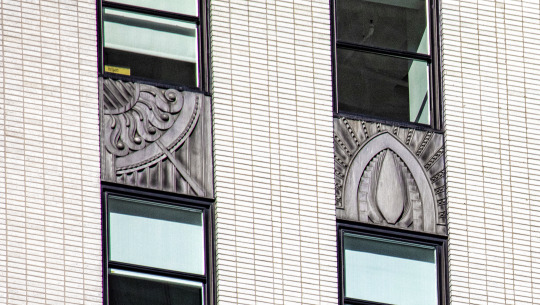

Show me the Chrysler Building but make me think about it for a minute. Fun Fact: the #ChryslerBuilding is still the tallest brick 🧱 building w/ a steel frame in the world. #1930 . It was the world’s tallest building for 11 months until the Empire State Building was completed.
70 notes
·
View notes
Text
A walk through Bengal's architecture
Bengali architecture has a long and rich history, fusing indigenous elements from the Indian subcontinent with influences from other areas of the world. Present-day Bengal architecture includes the nation of Bangladesh as well as the Indian states of West Bengal, Tripura, and Assam's Barak Valley. West Bengal’s architecture is an amalgamation of ancient urban architecture, religious architecture, rural vernacular architecture, colonial townhouses and country houses, and modern urban styles. Bengal architecture is the architecture of Wind, Water, and Clay. The Pala Empire (750–1120), which was founded in Bengal and was the final Buddhist imperial force on the Indian subcontinent, saw the apex of ancient Bengali architecture. The majority of donations went to Buddhist stupas, temples, and viharas. Southeast Asian and Tibetan architecture was influenced by Pala architecture. The Grand Vihara of Somapura, which is now a UNESCO World Heritage Site, was the most well-known structure erected by the Pala rulers.

The Grand Vihara of Somapura
According to historians, the builders of Angkor Wat in Cambodia may have taken inspiration from Somapura. Bengal architecture became known for its use of terracotta due to the scarcity of stone in the area. Clay from the Bengal Delta was used to make bricks.
The temple architecture has distinct features like the rich wall decoration, often known as the terracotta temples, which was one of the remarkable elements of Bengali temple architecture. The double-roofed architecture of thatched huts was replicated by Bengali temples. Square platforms were used to construct the temples. Burnt brick panels with figures in geometric patterns or substantial sculptural compositions served as the temples' adornment.

Dochala style
These served as models for many temples that were built in undivided Bengal. Construction materials used in ancient times included wood and bamboo. Bengal has alluvial soil, so there isn't a lot of stone there. The bricks that were utilized to build the architectural components were made from stone, wood, black salt, and granite. Bengal has two different types of temples: the Rekha type, which is smooth or ridged curvilinear, and the Bhadra form, which has horizontal tiers that gradually get smaller and is made up of the amalaka sila. Mughal architecture, including forts, havelis, gardens, caravanserais, hammams, and fountains, spread throughout the area during the Mughal era in Bengal. Mosques built by the Mughals in Bengal also took on a distinctive regional look. The two major centers of Mughal architecture were Dhaka and Murshidabad. The do-chala roof custom from North India was imitated by the Mughals.

Jorasako thakurbari
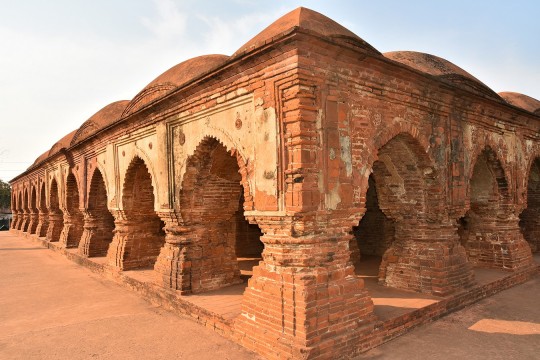
The Rasmancha is a heritage building located at Bishnupur, Bankura district, West Bengal.
Influence of the world on Bengal architecture: Although the Indo-Saracenic architectural style predominated in the area, Neo-Classical buildings from Europe were also present, particularly in or close to trading centers. While the majority of country estates had a stately country house, Calcutta, Dacca, Panam, and Chittagong all had extensive 19th and early 20th-century urban architecture that was equivalent to that of London, Sydney, or other British Empire towns. Calcutta experienced the onset of art deco in the 1930s. Indo-Saracenic architecture can be seen in Ahsan Manzil and Curzon Hall in Dhaka, Chittagong Court Building in Chittagong, and Hazarduari Palace in Murshidabad.
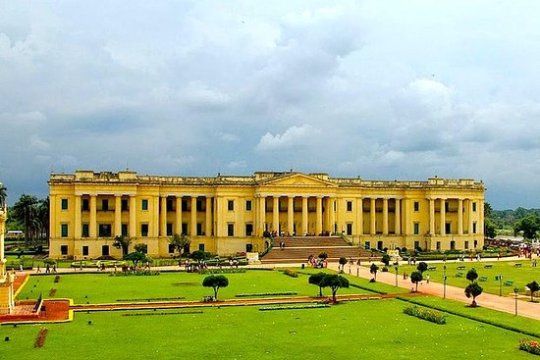
Hazarduari Palace in Murshidabad
The Victoria Memorial in Kolkata, designed by Vincent Esch also has Indo-Saracenic features, possibly inspired by the Taj Mahal. Additionally, Kolkata's bungalows, which are being demolished to make way for high-rise structures, have elements of art deco. The 1950s in Chittagong saw a continuation of Art Deco influences. The Bengali modernist movement, spearheaded by Muzharul Islam, was centered in East Pakistan. In the 1960s, many well-known international architects, such as Louis Kahn, Richard Neutra, Stanley Tigerman, Paul Rudolph, Robert Boughey, and Konstantinos Doxiadis, worked in the area.

The Jatiyo Sangshad Bhaban
This iconic piece of contemporary Bangladeshi architecture, was created by Louis Kahn. Midsized skyscrapers dominate the cityscapes of contemporary Bengali cities, which are frequently referred to as "concrete jungles." With well-known architects like Rafiq Azam, architecture services play a key role in the urban economies of the area. Overall Bengal architecture was influenced by various contemporaries of their time and continues to evolve.

Gothic architectural style seen in St. Paul's Cathedral in Kolkata.

Zamindar era buildings in ruin.

Belur Math in Howrah
#bengali#bangla#west bengal#bangladesh#tripura#assam#desi#বাংলা#india#architecture#tales#bengal architecture#history#kolkata#international#technology#information#temple#asia#bricks
168 notes
·
View notes